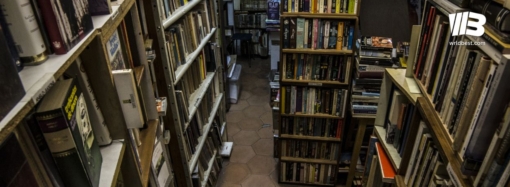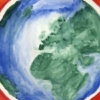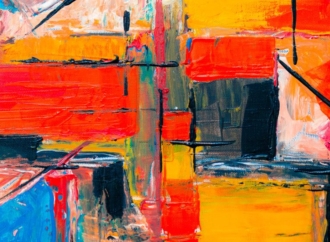Amidst this colourful mosaic, I stumbled upon a poetry reading at a local café. There, the words of Juan Felipe Herrera flowed seamlessly between languages.
I once wandered through the vibrant streets of San Diego. The rhythmic blend of English and Spanish conversations enveloped me, painting a vivid tapestry of cultural fusion. The murals adorning Barrio Logan’s walls narrated tales of struggle and triumph, each brushstroke echoing the community’s rich heritage. Meanwhile, amidst this colourful mosaic, I stumbled upon a poetry reading at a local café. There, the words of Juan Felipe Herrera flowed seamlessly between languages, capturing the essence of the Chicano experience. His poetry powerfully bridges cultures and honours the linguistic heritage of cities like San Diego and Los Angeles.
As we celebrate Mother Language Day, a time dedicated to the preservation and promotion of linguistic diversity, it feels fitting to reflect on the legacy of Herrera. Indeed, he is a poet whose work embodies the soul of bilingualism and cultural harmony.
A Journey Rooted in Storytelling
Born on December 27, 1948, in Fowler, California, Juan Felipe Herrera emerged from humble beginnings as the son of Mexican migrant farmworkers. His early life was marked by constant movement, living in trailers and tents across Southern California. This nomadic lifestyle, paired with his parents’ rich storytelling traditions, planted the seeds of his poetic voice. Furthermore, Herrera’s education at UCLA, Stanford, and Iowa Writers’ Workshop deepened his passion for identity, language, and community.
Herrera’s literary contributions span over thirty books of poetry, novels for young adults, and children’s literature. Moreover, his work explores immigration, identity, and the Chicano experience, capturing the complexities of life on the U.S.-Mexico border. Additionally, with a bilingual approach that seamlessly weaves English and Spanish, Herrera’s poetry mirrors the linguistic landscape of San Diego and Los Angeles, where diverse cultures intersect in dynamic and beautiful ways.
Almost Livin’ Almost Dyin’ by Juan Felipe Herrera
& hear my streets
with ragged beats & the beats
are too beat to live so the graves push out with
hands that cannot touch the makers of light & the
sun flames down through the roofs & the roots that slide
to one side & the whistlin’ fires of the cops & the cops
in the shops do what they gotta do & your body’s
on the fence & your ID’s in the air & the shots
get fired & the gas in the face & the tanks
on your blood & the innocence all around & the
spillin’ & the grillin’ & the grinnin’ & the game of Race
no one wanted & the same every day so U fire &
eat the smoke thru your long bones & the short mace
& the day? This last sweet Swisher day that turns to love
& no one knows how it came or what it is or what it says
or what it was or what for or from what gate
is it open is it locked can U pull it back to your life
filled with bitter juice & demon angel eyes even though
you pray & pray mama says you gotta sing she says
you got wings but from what skies from where could
they rise what are the things the no-things called love
how can its power be fixed or grasped so the beats
keep on blowin’ keep on flyin’ & the moon tracks your bed
where you are alone or maybe dead & the truth
carves you carves you & calls you back still alive
cry cry the candles by the last four trees still soaked
in Michael Brown red and Officer Liu red and
Officer Ramos red and Eric Garner whose
last words were not words they were just breath
askin’ for breath they were just burnin’ like me like
we are all still burnin’ can you hear me
can you can you feel me swaggin’ tall & driving low &
talkin’ fine & hollerin’ from my corner crime & fryin’
against the wall
almost livin’ almost dyin’
almost livin’ almost dyin’
Celebrating Linguistic Heritage Through Poetry
Herrera’s ability to capture the bilingual reality of urban life is perhaps best exemplified in his work, 187 Reasons Mexicanos Can’t Cross the Border: Undocuments 1971-2007. In particular, this collection blends poetry and prose to challenge conventional narratives surrounding immigration and identity. It is shedding light on the lived experiences of Mexican-Americans. Additionally, his vivid, experimental style captures border communities’ cultural hybridity, celebrating their resilience and creativity with powerful authenticity.
One of Herrera’s most poignant pieces, “El Ángel De La Guarda,” explores the emotional distance and regret of a father who feels disconnected from his children. The poem speaks to the struggles of many immigrant families, capturing universal themes of love, loss, and reconciliation. Hence, these deeply personal narratives resonate across cultures, showcasing the ability of poetry to unite us in shared human experiences.
Building Bridges Beyond the Page
Herrera’s impact extends far beyond his written work. Specifically, in the mid-1970s, he served as director of the Centro Cultural de la Raza in San Diego, a space dedicated to Chicano art and culture. Under his leadership, the center flourished as a hub for artistic expression, activism, and community engagement.
Herrera also brought his poetic gifts to unconventional spaces, teaching poetry in prisons and developing art and literature broadsides in San Diego. Furthermore, his dedication to social justice inspired initiatives like the i-Promise Joanna/Yo te Prometo Joanna Project, an anti-bullying poetry campaign. Through this project, Herrera encouraged students to express the effects of bullying through poetry, fostering empathy and understanding among youth.
“Poetry is a call to action, and it also is action.”
A National Voice for Diversity
In 2015, Herrera became the 21st U.S. Poet Laureate, making history as the first Latino to hold the position. During his tenure, he launched “La Casa de Colores,” an ambitious project inviting Americans to contribute to an epic poem celebrating the nation’s diversity. This initiative reflected Herrera’s belief in the power of collective voices to tell the story of a multifaceted America.
Herrera’s accolades are numerous, including the National Book Critics Circle Award in Poetry, the PEN/Beyond Margins Award, and a Guggenheim Fellowship. However, his greatest legacy lies in his ability to amplify marginalized voices. Through his work, he celebrates the rich tapestry of linguistic and cultural identities.
Preserving Linguistic Heritage
Lastly, the linguistic heritage of cities like San Diego and Los Angeles is not merely a backdrop for Herrera’s work; it is the essence of his poetic mission. His words capture the rhythms, stories, and voices of Chicano communities, ensuring their cultural contributions are celebrated and preserved. Indeed, as the world grows increasingly interconnected, his poetry serves as a reminder of the beauty found in linguistic diversity.
Conclusion
Reflecting on encountering Herrera’s words in a San Diego café, I’m in awe of his power to bridge divides. Indeed, his poetry, like the streets of San Diego and Los Angeles, is a vibrant mosaic of identities, resonating across borders. On this Mother Language Day, let us honour his tribute to linguistic heritage and find inspiration in his message of unity through diversity.
Juan Felipe Herrera’s life and work are a testament to the transformative power of language. His poetry celebrates his community’s cultural richness and inspires us to embrace and preserve our shared linguistic heritage.
To get even more inspiration check out Celebrating the Inspiring Success Stories of 5 Canadian Family Businesses This Family Day and Shining a Spotlight on 6 Beauty Salons That Elevate Your Look This National Lash Day.
3 comments


























3 Comments
Luis
February 21, 2025, 11:31 amBeautiful mix of Spanish and English, just like real life 🙏
REPLYmaestromaria
February 21, 2025, 12:03 pmhow his work about immigration still hits hard today. powerful stuff.
REPLYAngelica
February 21, 2025, 1:14 pmHad to study 187 Reasons in college – only poet who actually made me cry
REPLY